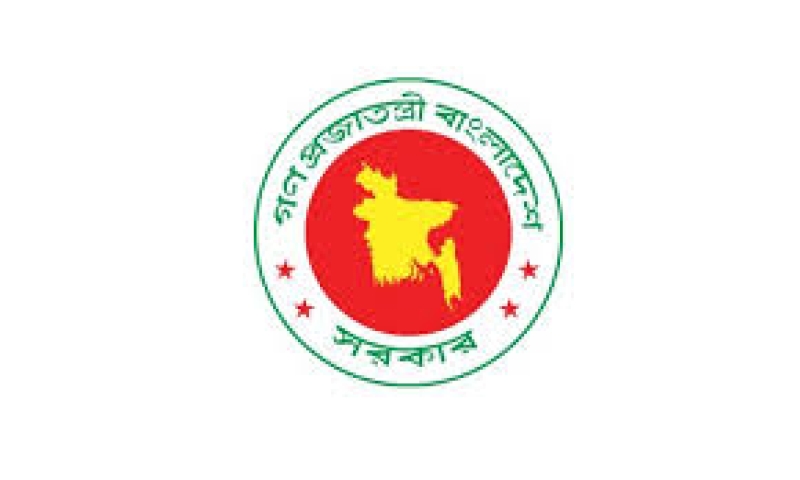- CA Yunus pays homage to Liberation War martyrs on Victory Day |
- Bangladesh capital market extends losing streak for second day |
- Bangladesh celebrates Victory Day Tuesday |
- 'Different govts presented history based on their own ideologies': JU VC |
GED projects cautiously optimistic economic outlook

The General Economics Division (GED) of the Planning Commission has projected a cautiously optimistic economic outlook for May and June 2025, supported by ongoing reform measures and a stabilizing macroeconomic environment.
According to the May 2025 edition of the Economic Update and Outlook, economic recovery is expected to gain momentum, buoyed by favorable developments in the external sector. These include positive growth in exports and remittances, a stable exchange rate, easing inflationary pressures, and steady improvements in bank deposits and private sector credit growth.
While global economic growth remains stable, the Outlook notes that domestic challenges—particularly political uncertainty and persistent inflation—may weigh on short-term prospects. It emphasizes that prudent measures in the upcoming budget to ease inflationary impacts and bolster investor confidence will be crucial for sustaining recovery in the next fiscal year.
The report points out that revenue collection continue to fall short of targets. However, recent structural reforms, including the dissolution of the National Board of Revenue (NBR) and its replacement by two new entities—the Revenue Policy Division and the Revenue Management Division under the Ministry of Finance—are expected to enhance the country’s revenue framework.
This reform, promulgated through an Ordinance on May 12, 2025, was based on recommendations from task forces formed by the Planning and Finance Ministries. It aims to address longstanding inefficiencies and conflicts of interest within the NBR and promote evidence-based policymaking.
The GED also highlights the introduction of a Medium- and Long-Term Revenue Strategy (MLTRS) for FY2025-26 to FY2034-35, which targets a tax-to-GDP ratio of 10.5% by FY2034-35. The report recommends a critical review of past reform failures to ensure the success of the new strategy, noting that Bangladesh’s revenue-to-GDP ratio remains lower than that of many peer economies.
The Outlook reports a steady increase in foreign exchange reserves, reflecting a strengthened external position. Gross reserves rose from $25.8 billion in July 2024 to $27.4 billion in April 2025, while Balance of Payments Manual 6 (BPM6) reserves climbed from $20.4 billion to $22.0 billion. The government has cleared substantial payments for LNG, electricity, and oil imports, further reinforcing reserve health.
Although fluctuations occurred—such as a dip in November 2024 followed by recovery in December—these were attributed to temporary external inflow changes and valuation adjustments. The difference between gross and BPM6 reserves, typically $5–6 billion, represents non-reserve assets excluded under BPM6 accounting.
The update said March 2025 saw an 8.51% year-on-year growth in aggregate bank deposits—the highest in nine months—driven by increased customer confidence and record remittance inflows. Private sector credit growth also rebounded to 7.57% in March from 6.82% in February, following a prolonged slowdown.
Public sector borrowing from commercial banks surged to Taka 985.79 billion by mid-April 2025—a 60% year-on-year increase—due to weak revenue collection and a suspension of central bank financing. The GED said that this could crowd out credit access for the private sector.
Bangladesh’s external sector in April 2025 presented a mixed picture. Remittance inflows rose sharply—up 35% year-on-year—contributing to a projected narrowing of the current account deficit from 1.4% of GDP in FY2024 to 0.9% in FY2025. This was attributed to rising remittances and a shrinking trade deficit.
However, exports declined, with April recording the lowest monthly figures of the fiscal year at $3.01 billion—a modest 0.86% growth. This drop was largely due to a slowdown in apparel shipments, the Eid al-Fitr holidays, and uncertainty over the U.S. administration’s reciprocal tariff policy.
Inflation showed a slight decline in April compared to March, mainly due to a decrease in food prices—especially rice and fish. The Outlook recommends maintaining strategic food reserves and strengthening targeted safety net programs such as school feeding initiatives, food-for-work schemes, open market sales, and employment guarantee programs. These measures are deemed essential, given fiscal constraints and the rising cost of food.
The GED underscores that while Bangladesh’s economy shows signs of recovery, sustained efforts in revenue generation, prudent fiscal management, and targeted social protection will be vital to ensure macroeconomic stability and inclusive growth in the coming months, reports BSS.

